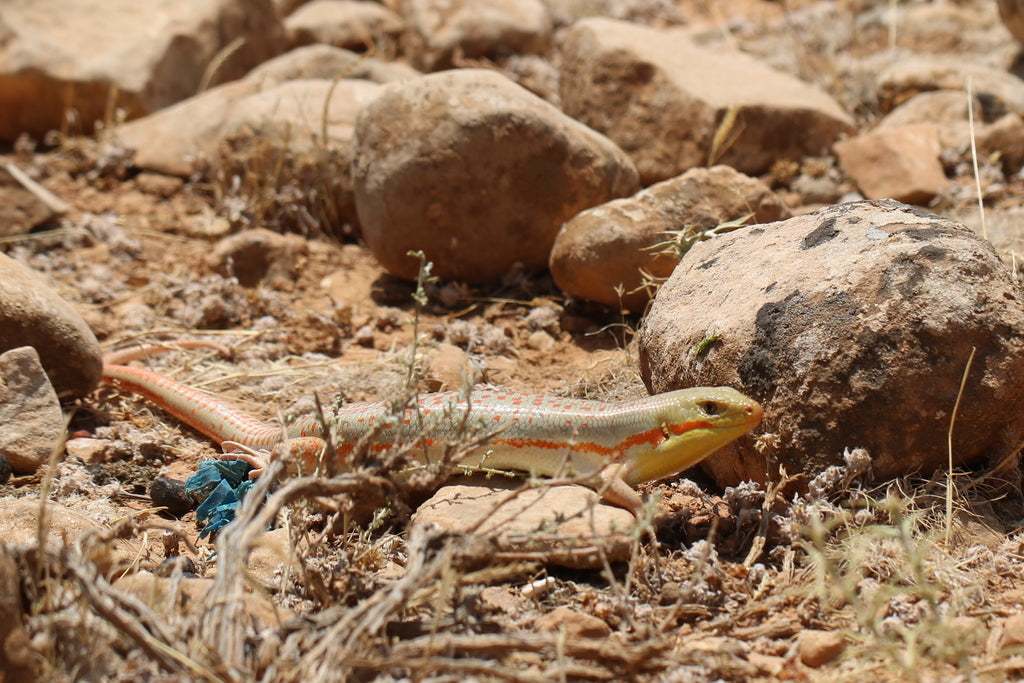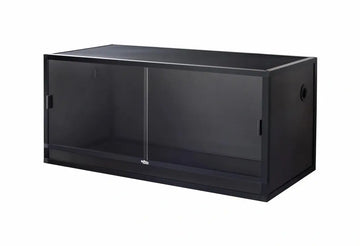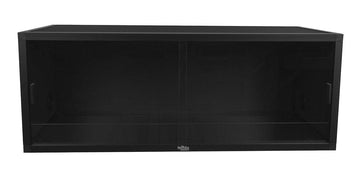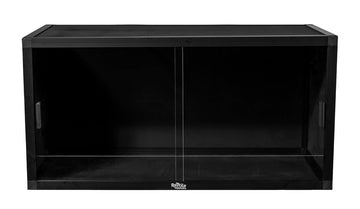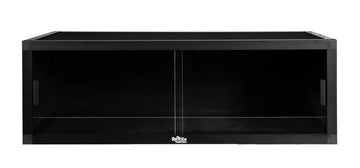The Schneider’s skink (Eumeces schneiderii) is also known as the Berber skink or the golden skink. They are a 12-18” long, diurnal, terrestrial lizard native to a wide range from North Africa to central Asia. Their habitat features sandy, stony soil, scrubby vegetation, and arid to semiarid conditions.
Schneider’s skinks have a short, triangular head, robust cylindrical body, short limbs, long tail, and smooth scales. Pattern and coloring vary by subspecies and locality, but generally speaking, this species is silver to olive brown above with a pale underside. There are often orange spots to stripes on the back and a yellow or orange stripe along the sides. Some may have a yellow throat.
Schneider’s skinks can become handleable pets with effort. With good care, they may live 15 years or more.
Minimum terrarium size for Schneider’s skinks
The minimum terrarium size we recommend for a small Schneider’s skink under 14” long is 36"x18"x18". For larger skinks, 4x2x2 is the recommended size. Of course, larger is always better — if you provide, they will use it!
While Schneider’s skinks do fine when housed singly, they can also be housed in groups. A 4x2x2 (120 gallon) enclosure can comfortably hold up to three skinks. However, cohabiting is best avoided unless you intend to breed. We recommend no more than one male per enclosure.
Do Schneider’s skinks need UVB?
Schneider’s skinks are diurnal, so they do benefit from high-quality UVB lighting as part of their setup. UVB lighting helps provide a clear day/night cycle, provides all of the vitamin D that your skink needs, strengthens the immune system, facilitates better digestion, and other benefits.
The best UVB bulbs for Schneider’s skinks varies by the size of the enclosure. For a 16-18” tall enclosure, the Arcadia T5 HO 12% works best. The bulb should be roughly half the length of the enclosure.
For best results, house the UVB bulb in a reflective fixture by Arcadia or Vivarium Electronics. When the UVB is obstructed by mesh, the basking surface should be 13-15” below the bulb. In the latter case, if there is no mesh, the distance should be increased to 17-18”.
UVB is blocked by glass and plastic, so placing the terrarium in front of a window isn’t “free UVB” — in fact it can make your terrarium too hot due to the greenhouse effect. Don’t forget to replace your bulb every 12 months!
Schneider’s skinks are likely to benefit from bright grow lights as part of their environment. Add a full-length ~6500K LED or T5 HO fluorescent grow lamp to provide extra illumination. For this, we recommend the Arcadia Jungle Dawn.
Lights should be on for 14 hours/day during summer and 10 hours/day during winter. This should be done gradually to simulate seasonal changes in day length, and helps regulate your skink’s hormonal rhythm for better health.
Best temperature for Schneider’s skinks
Schneider’s skinks should have a basking surface temperature of 105-115°F and cool side temperature between 75-85°F. Heat sources should be turned off at night and temperatures allowed to drop as low as 65°F. Place a digital probe thermometer on the cool side of the enclosure to make sure it never gets too warm, and use an infrared temperature gun to check the basking temperature.
It's recommended to provide heat for your skink with one or two low-wattage halogen flood heat bulbs. Heat bulbs (especially halogens) are better at imitating sunlight, and considered to be a superior form of reptile heating by experts. The heat lamp should be placed on one side of the enclosure. If the heat lamp is too warm, dim it with a plug-in lamp dimmer. If too cool, you need a higher-wattage bulb.
We don't recommend the use of ceramic heat emitters (CHEs), red bulbs, or blue bulbs, as these are not as effective.
Best humidity levels for Schneider’s skinks
Schneider’s skinks need low humidity levels — under 50% on average. However, occasional spikes in humidity are fine and possibly even beneficial. Use a pressure sprayer to mist the whole enclosure on a weekly basis.
Humidity levels can be measured with a digital probe hygrometer with the probe in the middle of the terrarium.
Best substrate for Schneider’s skinks
Schneider’s skinks need a layer of substrate at least 4” deep so they can dig and burrow, which is a natural behavior for them. The best substrates for Schneider’s skinks include:
- Zoo Med ReptiSand
- Exo Terra Desert Sand
To keep the substrate clean and your lizard healthy, remove old food and waste every day, along with contaminated substrate. Using a sand scoop can be very helpful. But we recommend that you completely remove and replace your substrate every 3-4 months.
How to decorate a Schneider’s skink terrarium
It’s terribly boring (and stressful!) for a lizard to be stuck in an enclosure with nothing in it except substrate and food/water bowls. It doesn’t matter how big the enclosure is if you don’t put things in it for your pet to use and interact with.
Here are some ideas:
- sturdy logs and branches
- ledges
- stacks of flat rocks (secured)
- additional hides
- live or artificial plants
It’s also best practice to cover three sides of the enclosure to help the skink feel more secure in its environment!
What to feed to a Schneider’s skink
Schneider’s skinks are insectivorous, which means that they eat mostly insects and other invertebrates. Here’s a basic feeding schedule for your pet:
- Juveniles — daily
- Adults — 2-3x/week
Variety is the key to providing a healthy, balanced diet for your Schneider’s skink. The more variety you can provide, the better!
Feeder insect options for Schneider’s skinks: dubias, discoids, crickets, black soldier fly larvae, mealworms, superworms, hornworms, silkworms, and darkling beetles.
Schneider’s skinks may also take rare treats of soft, chopped fruit.
Supplements
We also recommend a calcium and vitamin supplement to help keep your skink healthy. We recommend Repashy Calcium Plus LoD, lightly dusted on all feeder insects. It’s okay to occasionally skip a dusting.
Water
Of course, don’t forget a medium water bowl for your skink to drink from! Change the water daily and scrub the bowl with a reptile-safe disinfectant weekly, or whenever it becomes soiled.
How to handle your Schneider’s skink
Reptiles generally don’t appreciate petting and handling in the same way that dogs and cats do, but Schneider’s skinks can become accustomed to handling. To tame your skink, try hand-feeding via feeding tweezers. When picking up your skink, never grab from above — always scoop from below. It’s always best to let the skink come to you!
*This care sheet contains only very basic information. Although it’s a good introduction, please further your research with high-quality sources. The more you know, the better you will be able to care for your pet!
“Photo 106769310” by Johnny Baakliny is licensed under CC BY-NC 4.0

